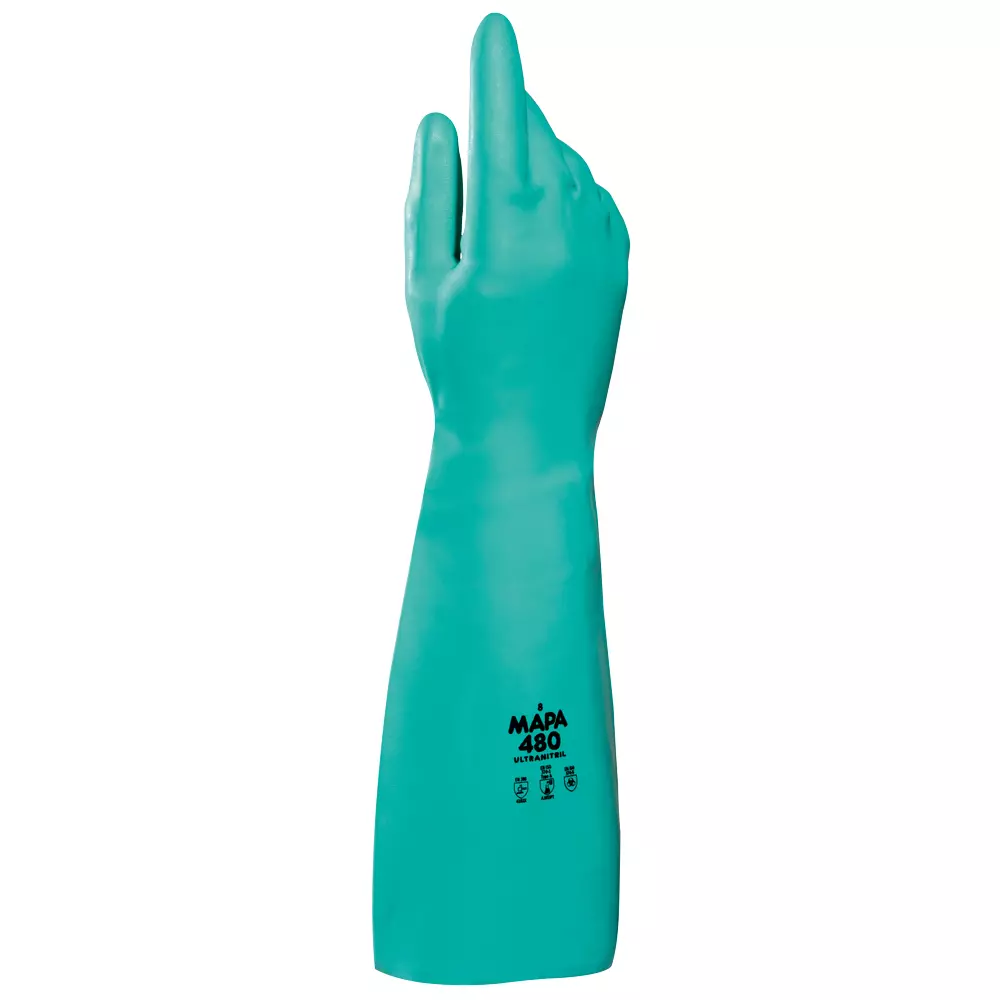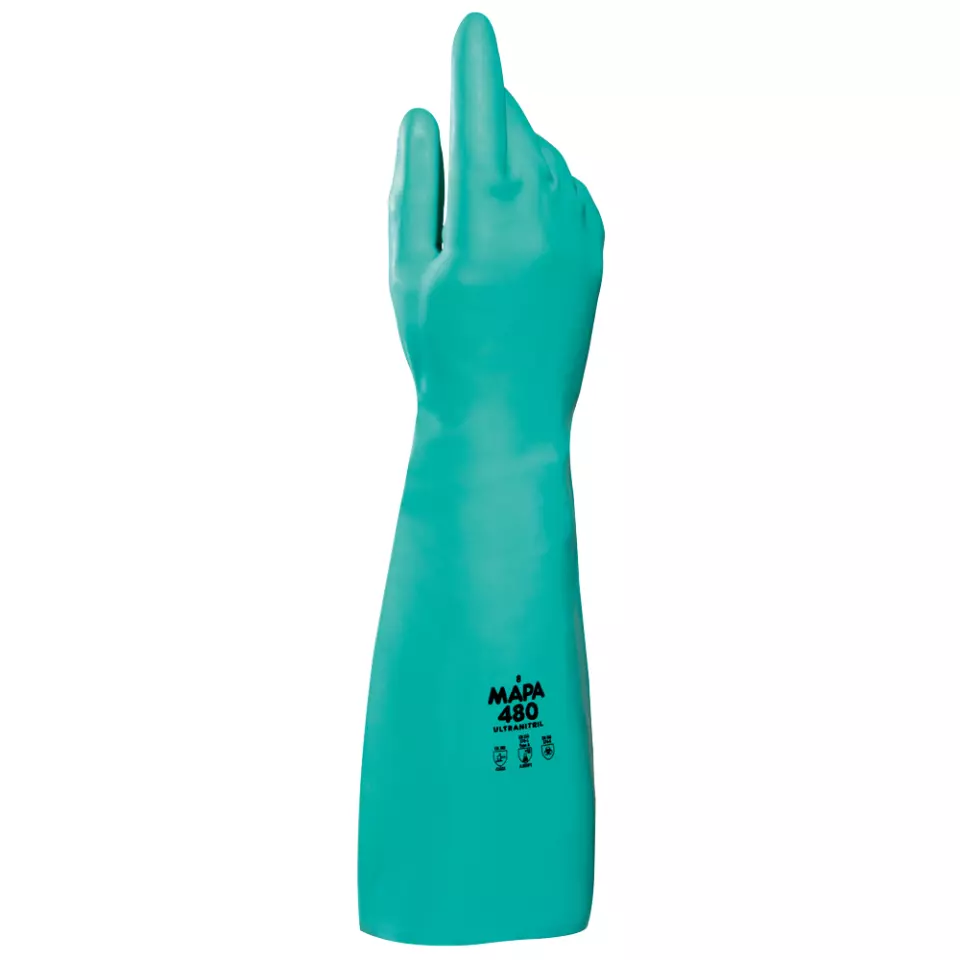
Features You'll Love

Cuff Style · Open
EN 388 · Abrasion Resistance Level 4, Tear Resistance Level 0, Puncture Resistance Level 2
Determines how the glove secures around the wrist, affecting fit, protection from debris, and ease of putting gloves on and taking them off.
Offers the highest level of protection against intense rubbing and wear from rough materials.
Offers no rated protection against the material tearing apart.
Withstands moderate force from sharp objects like heavy-duty splinters or wires.
MAPA
ULTRANITRIL PERFORMANCE 480 Gloves, 12 pairs
5 / 5
122,94 €
Price per 12 pairs
10,24 € / pair
Choose size
Free delivery
Features You'll Love

Cuff Style · Open
EN 388 · Abrasion Resistance Level 4, Tear Resistance Level 0, Puncture Resistance Level 2
Determines how the glove secures around the wrist, affecting fit, protection from debris, and ease of putting gloves on and taking them off.
Offers the highest level of protection against intense rubbing and wear from rough materials.
Offers no rated protection against the material tearing apart.
Withstands moderate force from sharp objects like heavy-duty splinters or wires.
Product description
Norm: En 388, En 374, Kat. 3 Material: Nitrile, Green thickness: Approx. 0,55 mm Length: Approx. 46 Cm Sizes: 7, 8, 9, 10 Premium Quality
• Additional Inner Layer Made Of White Nitrile
• Chlorinated
• Palm With Grip Pattern
• Straight Cuff